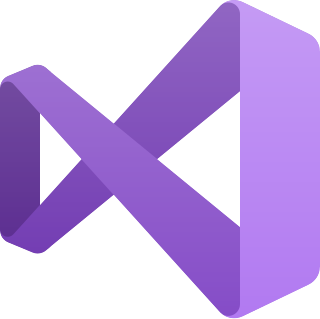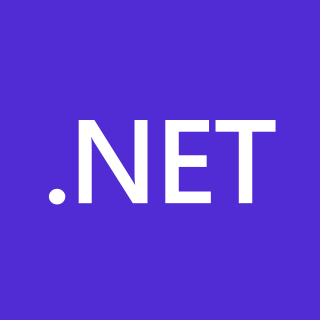Active Directory (AD) is a directory service developed by Microsoft for Windows domain networks. It is included in most Windows Server operating systems as a set of processes and services. Initially, Active Directory was used only for centralized domain management. However, Active Directory eventually became an umbrella title for a broad range of directory-based identity-related services.
VBScript is an Active Scripting language developed by Microsoft that is modeled on Visual Basic. It allows Microsoft Windows system administrators to generate powerful tools for managing computers without error handling and with subroutines and other advanced programming constructs. It can give the user complete control over many aspects of their computing environment.
Visual Basic for Applications (VBA) is an implementation of Microsoft's event-driven programming language Visual Basic 6.0 built into most desktop Microsoft Office applications. Although based on pre-.NET Visual Basic, which is no longer supported or updated by Microsoft, the VBA implementation in Office continues to be updated to support new Office features. VBA is used for professional and end-user development due to its perceived ease-of-use, Office's vast installed userbase, and extensive legacy in business.

Microsoft Visual C++ (MSVC) is a compiler for the C, C++ and C++/CX programming languages by Microsoft. MSVC is proprietary software; it was originally a standalone product but later became a part of Visual Studio and made available in both trialware and freeware forms. It features tools for developing and debugging C++ code, especially code written for the Windows API, DirectX and .NET.
ECMAScript is a JavaScript standard intended to ensure the interoperability of web pages across different browsers. It is standardized by Ecma International in the document ECMA-262.

Visual Basic, originally called Visual Basic .NET (VB.NET), is a multi-paradigm, object-oriented programming language, implemented on .NET, Mono, and the .NET Framework. Microsoft launched VB.NET in 2002 as the successor to its original Visual Basic language, the last version of which was Visual Basic 6.0. Although the ".NET" portion of the name was dropped in 2005, this article uses "Visual Basic [.NET]" to refer to all Visual Basic languages released since 2002, in order to distinguish between them and the classic Visual Basic. Along with C# and F#, it is one of the three main languages targeting the .NET ecosystem. As of March 11, 2020, Microsoft announced that evolution of the VB.NET language has concluded.
JScript is Microsoft's legacy dialect of the ECMAScript standard that is used in Microsoft's Internet Explorer 11 and older.
WinFS was the code name for a canceled data storage and management system project based on relational databases, developed by Microsoft and first demonstrated in 2003 as an advanced storage subsystem for the Microsoft Windows operating system, designed for persistence and management of structured, semi-structured and unstructured data.
Extensible Application Markup Language is a declarative XML-based language that Microsoft developed for initializing structured values and objects. It is available under Microsoft's Open Specification Promise.
Microsoft BizTalk Server is an inter-organizational middleware system (IOMS) that automates business processes through the use of adapters which are tailored to communicate with different software systems used in an enterprise. Created by Microsoft, it provides enterprise application integration, business process automation, business-to-business communication, message broker and business activity monitoring.
.NET Remoting is a Microsoft application programming interface (API) for interprocess communication released in 2002 with the 1.0 version of .NET Framework. It is one in a series of Microsoft technologies that began in 1990 with the first version of Object Linking and Embedding (OLE) for 16-bit Windows. Intermediate steps in the development of these technologies were Component Object Model (COM) released in 1993 and updated in 1995 as COM-95, Distributed Component Object Model (DCOM), released in 1997, and COM+ with its Microsoft Transaction Server (MTS), released in 2000. It is now superseded by Windows Communication Foundation (WCF), which is part of the .NET Framework 3.0.
Concurrency and Coordination Runtime (CCR) is an asynchronous programming library based on .NET Framework from Microsoft distributed with Microsoft Robotics Developer Studio (MRDS). Even though it comes with MRDS, it is not limited to modelling robotic behavior but can be used to express asynchronous behavior in any application.
Entity Framework (EF) is an open source object–relational mapping (ORM) framework for ADO.NET. It was originally shipped as an integral part of .NET Framework. Starting with Entity Framework version 6, it has been delivered separately from the .NET Framework.

Parallel Extensions was the development name for a managed concurrency library developed by a collaboration between Microsoft Research and the CLR team at Microsoft. The library was released in version 4.0 of the .NET Framework. It is composed of two parts: Parallel LINQ (PLINQ) and Task Parallel Library (TPL). It also consists of a set of coordination data structures (CDS) – sets of data structures used to synchronize and co-ordinate the execution of concurrent tasks.

Visual Studio is an integrated development environment (IDE) from Microsoft. It is used to develop computer programs, as well as websites, web apps, web services and mobile apps. Visual Studio uses Microsoft software development platforms such as Windows API, Windows Forms, Windows Presentation Foundation, Windows Store and Microsoft Silverlight. It can produce both native code and managed code.
Component Object Model (COM) is a binary-interface standard for software components introduced by Microsoft in 1993. It is used to enable inter-process communication object creation in a large range of programming languages. COM is the basis for several other Microsoft technologies and frameworks, including OLE, OLE Automation, Browser Helper Object, ActiveX, COM+, DCOM, the Windows shell, DirectX, UMDF and Windows Runtime. The essence of COM is a language-neutral way of implementing objects that can be used in environments different from the one in which they were created, even across machine boundaries. For well-authored components, COM allows reuse of objects with no knowledge of their internal implementation, as it forces component implementers to provide well-defined interfaces that are separated from the implementation. The different allocation semantics of languages are accommodated by making objects responsible for their own creation and destruction through reference-counting. Type conversion casting between different interfaces of an object is achieved through the QueryInterface method. The preferred method of "inheritance" within COM is the creation of sub-objects to which method "calls" are delegated.

The .NET Framework is a proprietary software framework developed by Microsoft that runs primarily on Microsoft Windows. It was the predominant implementation of the Common Language Infrastructure (CLI) until being superseded by the cross-platform .NET project. It includes a large class library called Framework Class Library (FCL) and provides language interoperability across several programming languages. Programs written for .NET Framework execute in a software environment named the Common Language Runtime (CLR). The CLR is an application virtual machine that provides services such as security, memory management, and exception handling. As such, computer code written using .NET Framework is called "managed code". FCL and CLR together constitute the .NET Framework.

Microsoft started development on the .NET Framework in the late 1990s originally under the name of Next Generation Windows Services (NGWS). By late 2001 the first beta versions of .NET 1.0 were released. The first version of .NET Framework was released on 13 February 2002, bringing managed code to Windows NT 4.0, 98, 2000, ME and XP.
Windows Runtime (WinRT) is a platform-agnostic component and application architecture first introduced in Windows 8 and Windows Server 2012 in 2012. It is implemented in C++ and officially supports development in C++, Rust/WinRT, Python/WinRT, JavaScript-TypeScript, and the managed code languages C# and Visual Basic .NET (VB.NET).




